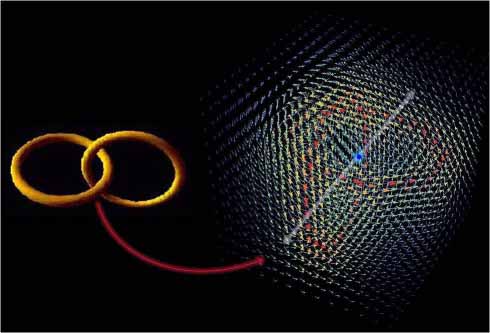

Cosmic strings are hypothetical 1-dimensional topological defects which may have formed during a symmetry-breaking phase transition in the early universe when the topology of the vacuum manifold associated to this symmetry breaking was not simply connected. Their existence was first contemplated by the theoretical physicist Tom Kibble in the 1970s.
The formation of cosmic strings is somewhat analogous to the imperfections that form between crystal grains in solidifying liquids, or the cracks that form when water freezes into ice. The phase transitions leading to the production of cosmic strings are likely to have occurred during the earliest moments of the universe's evolution, just after cosmological inflation, and are a fairly generic prediction in both quantum field theory and string theory models of the early universe. Continue reading
We May Have Just Found Evidence of a Cosmic String: a 'Crease' in The Universe Science Alert - September 29, 2023
A strange pair of galaxies several billion light-years away could be evidence of a hypothetical 'crease' in the Universe's fabric known as a cosmic string. According to an analysis of the properties of the pair, the two galaxies may not be distinct objects, but a duplicate image caused by a trick of the light. And the reason the light is duplicated could be because of a scar in the space between us and the galaxy, creating a gravitational lens.